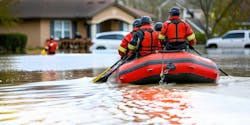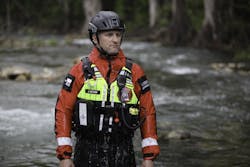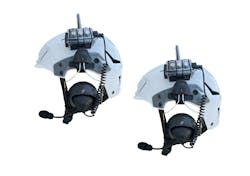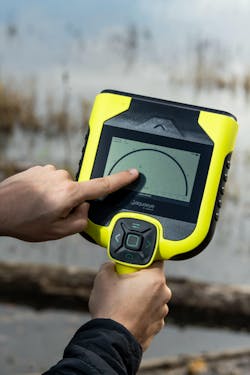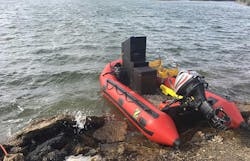Since 1950, the number of flood events has increased every single year in the United States. This has been brought about by an increase in sea levels, more intense rainfall, more frequent hurricanes and so-called urban heat islands (see “Urban Swiftwater Rescue: On a Scale Previously Unseen,” firehouse.com/21136485).
Fortunately, manufacturers that specialize in equipment for water rescues are heeding the calls from fire departments across the United States for technological upgrades that permit their rescue personnel to operate more quickly and more effectively.
Minimizing hindrances
Tim Dorsey, who is the assistant chief of special operations and programs for the Sarasota County, FL, Fire Department (SCFD), tells Firehouse that a main reason that he was hired by the department two-and-a-half years ago was to look at best practices and standards for water rescue and to implement those at the SCFD. Tools for water rescue simply weren’t in place, including personal flotation devices, he adds.
“We put a life jacket on every seated position of every apparatus and vehicle that we own,” Dorsey says. “That’s something that [the department] never did before.”
The SCFD opted for Force 6’s Tec 2 swiftwater rescue vest, which was introduced in 2024. Built off of the success of the company’s RescueTec PFD, the Tec 2’s innovation derives from its nine size adjustments. This allows for a tailored fit no matter the size of the user who dons it.
Dorsey had the opportunity to put his hands on different iterations of the PFD leading up to its current design. He’s impressed with Force 6’s responsiveness to end users.
He recalls instances of when he encountered company representatives at trade shows and they sought his input about the SCFD’s recent experiences with a product and design tweaks that might deliver more effectiveness. This has included design considerations that can be particular to various rescue requirements.
“We have developed a comprehensive ecosystem of products that empowers rescuers to customize their PFDs to meet the unique demands of their specific missions and operational environments,” Nathan Smith, who is Force 6’s general manager and a former swiftwater rescue technician, says. “From team leaders to boat operators and rescue swimmers, our PFDs can be tailored to be suited to any role.”
Snag dangers are a big problem in the swiftwater realm. With this in mind, numerous straps that hung from the Tec 2 in its earliest iterations were removed. The foam in the Tec 2 was designed to conform over the torso, to provide a more comfortable fit. Dorsey believes that the Tec 2 is “built for the person that’s going to be going in the water, gives them all the features, the most flotation, and everything they need to get that job accomplished.”
The minimization of complications that can arise during a water rescue also was key to BbTALKIN USA’s development of the Exfil adapter for the company’s waterproof headset that’s designed for the Team Wendy helmet. The functionality that’s provided by the Exfil is particularly useful in circumstances that require both hands of a rescuer to be free, given that the tactical radio microphone doesn’t have to be keyed by hand. (Note: The Exfil isn’t a replacement for a VHF radio.) When rescue team members are properly outfitted, as many as four individuals can connect to each other in real time.
Time is crucial
Of course, both the Tec 2 PFD and the Exfil adapter/headset/Team Wendy helmet combination contribute to time savings during a rescue. So, too, does Voda Safe’s AquaEye Pro portable active sonar device. Because it utilizes a vast dataset and machine learning, the device quickly distinguishes items that can be found in water from the distinct characteristics of a human in water. This was managed by the company’s development of a new dataset that was created from thousands of scans of freedivers, swimmers and scuba divers.
Carlyn Loncaric, who is the founder and CEO of Voda Safe, tells Firehouse that algorithms that result from the new dataset deliver improved accuracy that permits members of water rescue teams to make faster and more accurate decisions. This, she explains, means fewer false positives and missed targets.
Furthermore, the AquaEye Pro system is designed to be capable of saving and sharing the data that are collected from scans.
“This is a feature our customers have been asking for,” Loncaric adds, “to allow teams to work together quickly, compare scans during a search or debrief accurately.”
Jon Klukas, who is the CEO of Copper Collar Group and who conducts trainings for fire departments on the AquaEye Pro, has a background in military diving operations. “I had the luxury of owning and operating some of the most sophisticated sonar on the planet in the military,” Klukas says. “I was really surprised that Voda Safe could put this technology together at the price they did.
“What AquaEye Pro brings to the table through [the algorithm and artificial intelligence] is it takes out most of the guesswork by simply providing an X or an O on the screen on targets that have high probabilities of being a human target,” he adds.
When the tactical rescue operations group of the Paraná Military Fire Department (Curitiba, Brazil) was called to assist in the search for two missing persons who were on board a boat that capsized in the Passaùna Reservoir in November 2024, members of the rescue team used the SONAR VIEW-2 software that’s built into JW Fishers’ CHIRP Side Scan Sonar System.
According to a report on g1.globo.com, a captain who is a member of the department said that the rescue-turned-recovery effort was the first time that the Paraná Military Fire Department used the equipment.
“After 15 minutes of operation, the two bodies at the bottom were very clear,” the g1.globo.com report quoted the captain’s explanation of the search. “They were seven meters deep and two meters apart.”
“You just have to set the depth of how deep you are searching, and the rest does itself,” JW Fishers Chief Operating Office Brian Smith-Fisher says.
Coordinates are collected automatically in the data when using the integrated GPS positioning gear. When the mouse is moved over a target, the location coordinates are displayed on screen.
The standard system includes 150 feet of Kevlar reinforced cable, a towfish that can be divided into two sections for easy storage in a waterproof container, a semi-rugged Getac laptop and a system control box.
A call to action
Although more and more places experience substantial flooding, many of the departments that serve these areas don’t have proper water rescue equipment. One reason could be because the departments rarely, if ever, were called on to effect water rescues. Chiefs, officers and members alike should consider this a clarion call to review their response reports and scrutinize their response district to determine how things have changed and how that requires a new perspective on their equipment cache.
For More Water Rescue
About the Author

Ryan Baker
Ryan Baker is a writer and associate editor with prior experiences in online and print production. Ryan is an associate editor for Firehouse with a master's degree in sciences of communication from the University of Wisconsin-Whitewater. He recently completed a year of teaching Intro to Public Speaking at UW-Whitewater, as part of his graduate program. Ryan acquired his bachelor's degree in journalism in 2023 from UW-Whitewater, and operates currently out of Minneapolis, MN. Baker, also writes freelances for the Ultimate Frisbee Association (UFA) in his free time, while also umpiring baseball for various ages across the Twin Cities Metro Area.
